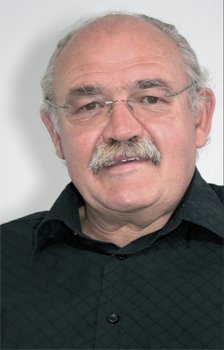Gary Firth
Highly regarded local historian, Dr Gary Firth, taught at Bingley College, Bradford & Ilkley College, and then Bradford College, from 1974 until 1997.
 Despite suffering hemiplegia following a
stroke while playing rugby at only 35, Gary
has passed his passion for history to many
thousands through his fascinating books and
absorbing lectures.
Despite suffering hemiplegia following a
stroke while playing rugby at only 35, Gary
has passed his passion for history to many
thousands through his fascinating books and
absorbing lectures.
Gary gained his first degree in History and
Literature at Leeds University in 1968. While
teaching at Bingley Grammar School, he
completed a PhD, supervised by Jack Reynolds,
at Bradford University in 1974. He moved
to Bingley College, teaching trainee history
teachers until its closure. Gary then gained a
second doctorate, regarding the teaching of
history to 9 years olds, and became Principal
Lecturer in Cultural Studies at the Ilkley
campus. When Ilkley closed he moved to the
McMillan campus where he was the Teacher
Trainer in History until his retirement in 1997.
Gary’s books include Bradford As it Was (1978); Victorian Yorkshire at Play (1989);
Bradford and the Industrial Revolution:
An Economic History, 1760-1840 (1990);
Street Characters of a Victorian City: John
Sowden’s Bradford (1993); History of
Bradford (1997); The Leeds and Liverpool
Canal in Yorkshire (1999); Salt and Saltaire
(2002) and J.B. Priestley’s Bradford (2006).
He has also collaborated with photographer
Ian Beesley on Through the Mill (1987) and
Meltdown: Words and Images from West
Yorkshire Foundries (2004).
“Local history is not about buildings and
locations but about the people in the
community – whatever their background. It
is their story. The best ice breaker was to start
a lesson by putting old maps on the table.
The students would all be pouring over them
and contributing naturally. Teaching at all the
levels at Bradford College was about pitching
to different audiences but the beauty was
that courses became natural feeders for the
next stage. The longevity of many of those
that taught here moved students on from
one course to another and allowed students a
security not found in many institutions.”
Photograph by Shelagh Ward